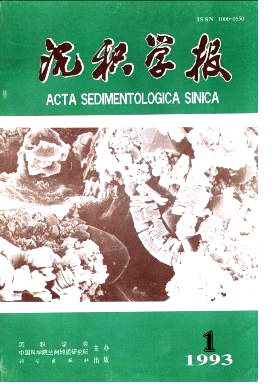Late Paleozoic Tempestites and Their Palaeographical Significance in Bogda Mountain, Xinjiang
- Received Date: 1991-07-09
- Publish Date: 1993-03-10
Abstract: Bogda Mountain in Xinjiang is composed of Carboniferous and Permain, but mainly the former. Permain only distributes at the foot of the mountain. The lower to middle part of Lower Permain is deep water beds made up of turbidity flow and other gravity flow deposites, under or above which large amounts of volcanic clastic tempestites have been found. They can be divided into seven types and further attributed to proximal and distal tempestites. Although Carboniferous and Permain systems of the south and north sides of Bogda Mountain have similar environment variations, i. e., from littoral zone and neritic shelf to bathyal slope, turning back to neritic shelf and littoral zone and then to continental enviroments, but the sedimentary features of of two sides, especially those of shallow water beds overlying deep water ones, are quite different. The north side consists of a sedimentary sequence developing dark fine-grained laminations, in which existed no large sedimentary textures occuring in tempestites and strong hydrodynamic environments, but those often found in a tidal flat, i. e., herringbone cross-beddings, lenticular beddings, vein beddings, wave beddings, which indcates that the beds were formed in a tidal flat that was obstacled and weaky hydrodynamic. In the similar beds on the south side frequently occurs not only proximal tempestites but also wave ripples, wave cross beddings, and reworked wave ripples formed in a wave-controlled environment, washing beddings, composed of coarse sandstones with high structure maturity, and oolite limestones further indicate that the environments were controlled by high-energy wave. As mentioned above, the palaeohydrodynamic environments of the two sides were quite different, so it is impossible for them to be formed in an united water body, which provides sedimentological evidences for Late Paleozoic Bogda islands arc. Because oceanic plate continuously subducted from north to south and volcanic products were formed, the two sides of Bogda Mountain finally were dissected into two different sedimentary basins with differend sedimentary characteristics.
| Citation: | Li Yuci, Jin Huijuan. Late Paleozoic Tempestites and Their Palaeographical Significance in Bogda Mountain, Xinjiang[J]. Acta Sedimentologica Sinica, 1993, 11(1): 23-31. |






 DownLoad:
DownLoad: